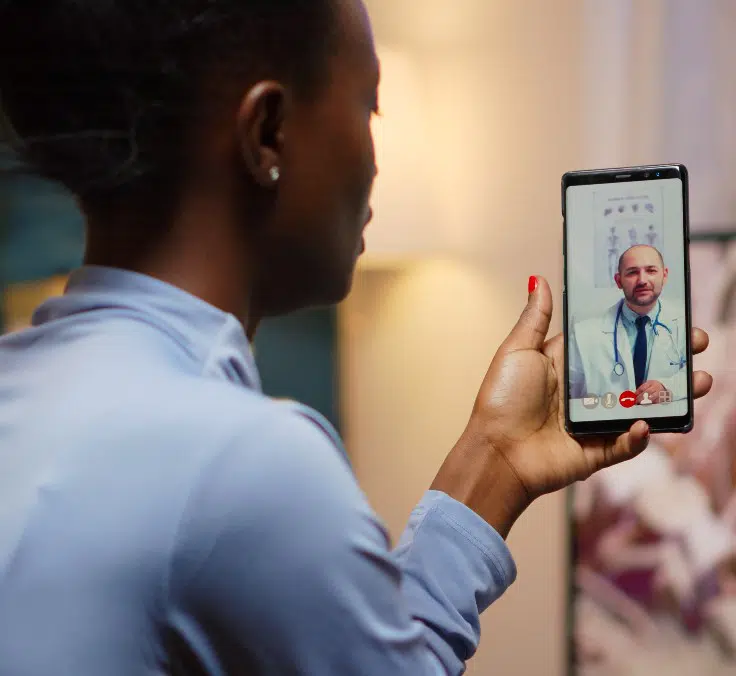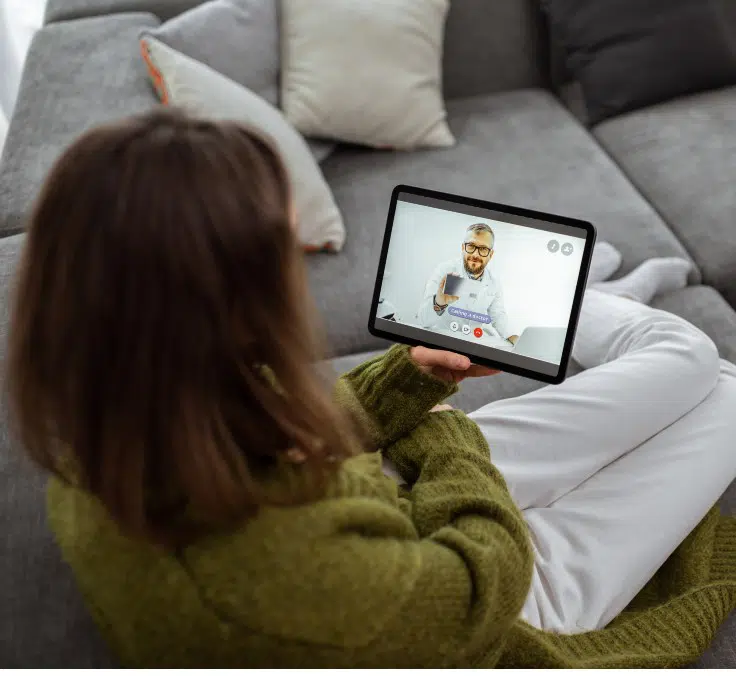INNOVATION| 26.09.2022
With Home-spitals, health moves into the home
Telemedicine’s major boost in popularity since the beginning of the global coronavirus pandemic is a topic we have already covered before.
Its popularity is borne out by the data; in February 2021, the use of remote medical services — which peaked in April 2020 while much of Europe was confined at home — was 38 times higher than pre-pandemic levels, confirming eight months of relative stabilization. In this sense, telemedicine seems to be here to stay, and, as a result, a significant portion of primary care is moving from medical centers to the home. In fact, some studies estimate that by 2025, spending on home care will account for 25% of the total health budget.
This healthcare trend is not new; in 2016, the World Economic Forum already coined the term home-spital, which MAPFRE includes as one of the major trends in the future of healthcare in its Point of View report: “The health of the future: Five trends shaping the future of the industry”, presented at a meeting during the Mobile World Congress in Barcelona. The factors driving this movement are diverse but indisputable. First, we should mention the saturation of public health systems and the slow pace at which infrastructure is adapting to population growth in urban areas. Second, population aging: in the rich countries of Europe, the percentage of the population over 80 years of age will double between now and 2050. Third, the need for public and private healthcare providers, including insurance companies, to alleviate operating costs to accommodate the prices of new treatments. Lastly, and above all, the importance of returning to healthcare the human, close and quality treatment that tensions in the system have worsened in recent years.
“It is difficult to replace face-to-face care with remote care. But Covid-19 changed everything. There were many heroes in the healthcare sector, both those who were in the medical centers every day in, day out and those who, even when under lockdown, supported society through Savia, MAPFRE’s telemedicine platform. Sixty percent of Savia’s users started their first experience with telemedicine during lockdown,” says Pedro Díaz Yuste, General Manager of the company.
The challenges of service
This decentralization of healthcare is not without its challenges. On the one hand, both healthcare providers and insurance companies must ensure proper compliance with treatments, so it is vitally important to establish control solutions that respect patients’ privacy. This challenge may lead to new business models that proactively incentivize good patient practice.
On the other hand, the logistical challenges involved in the supply of medicines, the allocation of medical equipment, and face-to-face home visits cannot be underestimated. The decentralization of the healthcare system does not only mean connecting doctors and patients remotely, as this new model encompasses all aspects of the value chain. Today, we can already find different remote diagnosis formulas, with applications ranging from general medicine to sophisticated illnesses.
In other areas related to telemedicine, new forms of digital therapy have proven to be able to increase the quality of service and at the same time contribute to alleviating the scarcity of resources. There are new “healthcare self-service” solutions such as Koa Health, a Spanish startup focusing on digital mental health that uses artificial intelligence to deliver personalized programs that the user undertakes on their own and at their own pace. In this case, the physician operates in the background, monitoring the evolution of the indicators and watching for possible warning signs that require intervention. Finally, there are an infinite number of patient monitoring solutions, such as Donisi, a medical technology company that provides in-home medical monitoring of multiple cardiopulmonary parameters simultaneously, helping to optimize the continuum of care for patients with congestive heart failure and other chronic illnesses.
Another good example is Acurable, a startup that focuses on medical devices. Its AcuPebble products use innovative acoustic sensors capable of continuously sensing information-rich patient biosignals. The startup created the first medical device to obtain the CE mark for the automated diagnosis of Obstructive Sleep Apnea.
At MAPFRE, we have Savia, the digital health services platform which, unlike traditional insurance, operates on a pay-as-you-go basis. After almost four years in the Spanish market, it has more than 420,000 registered users, over 100,000 customers, and was visited more than five million times in the last year. This platform offers a wide range of services and a medical directory made up of more than 30,000 professionals practicing 42 medical specialties. Savia users can undergo medical consultations quickly and easily, even on their cell phones, purchase products and services online, and choose between different payment methods: per service purchased or through subscription plans. In addition, Savia offers the option of subscribing to a customized plan for companies.
Will the true value of IoT finally emerge?
Donisi and Acurable are two examples of next-generation medical devices that monitor vital signs and biomarkers in a radically different way than ever before. It seems that the Internet of Things (IoT) is finding an ocean of value in the field of home-based care.
Another groundbreaking example is Aerial, which differs from other solutions in that it is able to monitor the well-being of elderly people without using wearables or portable devices that make the person feel controlled and dependent. In this case, it only uses a Wi-Fi network and its signals. Furthermore, it is a non-invasive solution that improves compliance and does not alter the user’s everyday environment.
What do experts anticipate for 2030?
In an article for the World Economic Forum, Dr. Melanie Walker, co-chair of the Neurotechnology & Brain Science Future Council and professor of Neurology and Neurological Surgery at the University of Washington, argues that “the days of patients dying while they wait for an organ donor will soon be over. Organs, tissues and supporting structures like bones or ligaments will be biologically 3D-printed on demand. Rates of traumatic injury are falling and will continue to decline as we introduce driverless cars and robot workers for risky tasks. And really: 80 is the new 60, with all of the regenerative options on the horizon.”
Dr. Walker, like many other medical experts, believes that by 2030 “the very nature of disease will be further disrupted by technology. So disrupted, in fact, that we might have fewer diseases to manage.” According to these experts, the fourth industrial revolution will lead to humans living longer and healthier lives. Certain hospital practices may even disappear altogether, and the need for hospitalization will eventually vanish. Not by 2030, but not long after.
With all the advances in mobile devices, the hope is that instead of getting medicine from a pharmacy, our own device will receive the information needed to print an array of personalized pharmaceuticals and probiotics on demand from our very own living room or kitchen. All this will take place in mere minutes. So, with all this in mind, would you agree that the hospital of today could potentially find its replacement in the home-spital of tomorrow?
RELATED ARTICLES:




